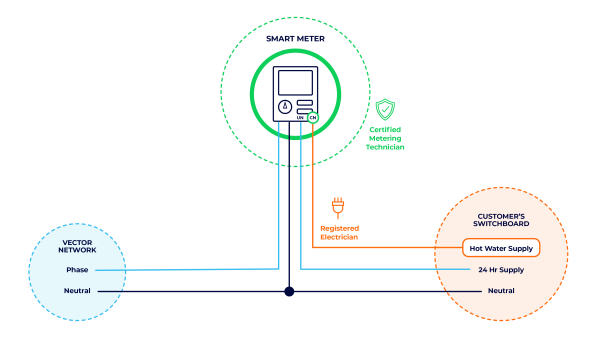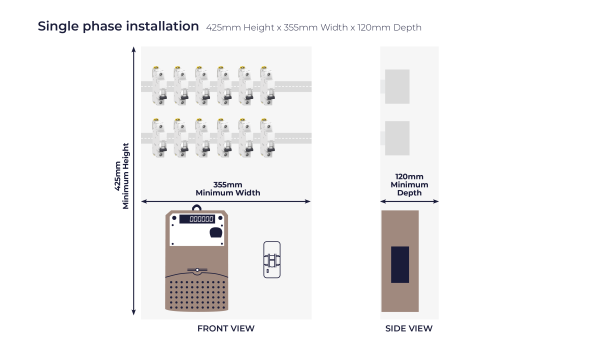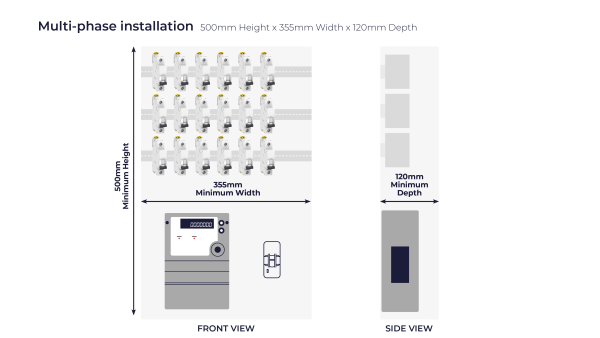Electron Issue 120
Keeping you up to date with the latest regulatory changes, exam reports, technical issues, consultation results and other issues affecting electrical workers - published June 2023.
Presiding Member's update
 Kia Ora
Kia Ora
The Board, as part of its duties and functions, hears from trainees seeking an extension to their training licences. We have noted there is an increasing number of applications for 3rd training certificates. These must be presented to the Board for consideration and, on occasion, the Board will request an interview with the applicant and their supervisor. We do this when we have concerns over the application and need to be confident the trainee is still working hard towards their goal and has the required level of support from their employer. As we all know, training is a 2-way street.
One of the recurring reasons for an extension to the training licence is the trainee has left the industry for a period and, at present there is no ability to place their training licence on hold. Our proposed stepped licencing changes will go some way to helping with this.
If you do have to leave the industry please liaise with your training provider or the Licensing Leam to assist you.
Russell Keys
Presiding Member
Standard of the month
Featured standards:
AS/NZS 3019:2022 Electrical installations – Periodic assessment
This edition of the Standard was published in September 2022 and supersedes the 2007 version – Periodic Verification. The major changes in this edition are:
- The Sections are to be applied cumulatively rather than each being stand-alone
- The testing is intended to minimise disruption while the assessment is conducted
- The requirements for inspection and testing now align with AS/NZS 3000
- For NZ, a new Section 6 is to be applied where the safety of an existing installation should be of a higher standard than that which applied at the time(s) of the original construction of its various parts, but where full compliance with the current requirements for a new installation is not warranted or required
- Revised reporting forms are now more appropriate for purpose.
The document provides the means to determine whether an installation connected to a low voltage a.c. supply system continues to be safe in respect of the prevention of fire and the protection of people and livestock from electric shock.
The types of assessment covered are:
- basic visual inspection
- detailed visual inspection and limited testing
- visual inspection and additional testing
- assessment of enhanced safety (in New Zealand).
It does not apply to the:
- periodic assessment of relocatable units and their site installations
- marinas and boat installations
- hazardous areas
- electro-medical areas
- construction and demolition sites
- shows, carnivals and event installation.
In addition, and specific to NZ, it does not apply to:
- installations that operate at non-standard voltages and frequencies
- mobile electro-medical relocatable installations
- areas of electrical installations where electrical animal stunning or meat conditioning occurs.
See the full Standard, and others, on the EWRB online portal.
Faulty manufactured caravan supply leads
The Board have been advised that WorkSafe-Energy Safety has recently received 4 reported instances of the same branded caravan supply leads with identical phase/neutral transposition faults in the Connector (socket) fitting.
Product identification
WorkSafe Energy Safety have published a safety alert warning the public about the danger, clearly identifying the product and advising what needs to be done if it is found.
Energy safety business update(external link) — WorkSafe
The Board would like to take the opportunity to request all electrical workers particularly those involved in caravans and similar connectable installations to raise awareness of this faulty product and /or distribute this safety alert to relevant sections of the public or clients they deal with.
Warrant of electrical fitness checks
The Board understands these faulty products were all identified by electrical inspectors carrying out warrant of electrical fitness (WoEF) safety verification checks on caravans.
While this demonstrates the value and importance of this safety regime there remains some concern of a possibility that these leads were not tested correctly and passed through an earlier WoEF verification without being identified as being faulty. This has not been clearly established but according to the safety alert these supply leads have been around for a while, having all been manufactured sometime before 2016.
The Board would like to remind all inspectors issuing WoEF of these 2 important points:
- It would be considered sound practice as part of any WOEF check to verify whether the client has any spare supply leads that have not been presented and ensure these leads are also tested.
- In accordance with Appendix C of standard AS/NZS 3001 Electrical Installations-Transportable structures and vehicles including their site supplies supply leads must undergo a series of electrical tests including polarity.
Further guidance on requirements for issuing WoEFs, and electrical safety for connectable installations, is available from an earlier Board article which you can read below.
Electrical safety assessment of existing installations
Following inquiries from electrical workers, the Board provides guidance on the use of Standard AS/NZS 3019 Electrical Installations – Periodic assessment and considers whether the updated 2022 version of that standard could be applied and in what circumstances.
In doing so the Board have applied the following guidance from WorkSafe Energy Safety.
An earlier article from WorkSafe Energy Safety about using the latest Standards is also available from the link below.
WorkSafe Energy Safety guidance
Applying regulations and standards.
All prescribed electrical work (PEW) must be carried out and certified in accordance with the Electrical (Safety) Regulations 2010 (ESR) and the applicable cited Standards.
It is important to understand the cited standards means the dated version of those standards contained in Schedule 2 of the ESR.
Schedule 2 of the ESR(external link) — New Zealand Legislation
Using non-cited Standards
Using the provisions of an updated Standard where an earlier version of that standard is currently cited while not mandatory may be considered as reasonably practicable steps to improve or enhance the safety of any completed work provided that:
- compliance with the cited Standard is still achieved
- reference to the updated Standard is included on any certification, or document, together with the cited Standard.
Maintaining safety
The ESR require that safety is always maintained. If you are intending to carry out work which is not covered by a cited standard, ensure you apply the (Safety Fundamental Principles) contained in Part 1 of the Australian / New Zealand Wiring rules. Always look for guidance and recently issued Standards for advice and ensure that the electrical work is not deemed to be unsafe by part 2 of the ESR.
Board guidance
Use of Standard AS/NZS 3019:2007
AS/NZS 3019:2007 sets out the requirements for periodic verification of existing low voltage electrical installations. Verification by inspection and/or testing is intended as far as reasonably practicable, to determine whether the installation is in a safe condition for continued use. This standard does not apply to the periodic verification of certain special installations which are identified in the scope of the standard.
3 levels of verification are specified:
- section 3 basic visual inspection
- section 4 visual inspection and limited testing
- section 4, visual inspection and full testing.
The standard also contains report /certificate forms which are used for reporting on the condition of the existing installation after completing the verification. The report may include recommended actions and other items requiring attention.
It is important to note that should the assessment reveal evidence of an unsafe condition, this situation will need to be addressed appropriately.
Regulatory application of AS/NZS 3019 for installations
AS/NZS 3019 is cited in ESR regulation 74 - Reconnecting or restoring power supply to certain low voltage installations.
Regulation 74(external link) — New Zealand Legislation
Regulation 74 applies to low voltage installations that have been disconnected/isolated from the supply for more than 6 months and on which no general or high risk prescribed electrical work has been done since the last disconnection or isolation.
In accordance with regulation 74, the person proposing to reconnect or restore supply must, before doing so, “give or sight” a certificate issued in accordance with section 3 of AS/NZS 3019:2007, that certifies the installation is safe for continued use.
General safety verification
Verification of an existing connected electrical installation may be requested by the owner/ occupier, or another organisation. This request may result from a client wanting confirmation an older installation is safe or seeking advice about improving safety. In this situation the person carrying out the verification could consider using the updated 2022 version of AS /NZS 3019. This updated version has been subject to significant improvements, additions and provides a new pathway for enhancing the safety of an installation.
Updated Standard AS/NZS 3019:2022
This latest version of the Standard has been significantly expanded and enhanced with additional features. Amongst other major changes, has been the development and inclusion of a New Zealand only section, 6-Assessment of Enhanced Safety.
This section is intended to be applied where the owner / occupier of an existing installation is seeking a higher safety standard than that which applied at the time of original construction of the various parts of the installation; but where full compliance with the current requirements for a new installation is not warranted or required.
An installation which is to be assessed for compliance with section 6 must initially be assessed in accordance with the preceding sections 3,4, and 5.
This means an older installation which has been upgraded and assessed in compliance with all the relevant sections of AS/NZS 3019:2022 could with reasonable confidence be expected to have the safe life of that installation extended.
Changes from the AS/NZS 3019: 2007 edition
- sections are intended to be applied cumulatively rather than standing alone
- inspection and testing requirements have been updated and improved
- benchmarks /criteria for assessment are more detailed
- a new appendix on thermography with illustrative coloured images
- sample reporting forms have been revised to be more appropriate.
This is 1 of over 95 Standards that are available for all licenced electrical workers to access from the Electrical Workers Registration Board (EWRB) online portal.
Overseas workers applying for registration
If you are an overseas worker wanting to obtain EWRB registration, or you are an employer bringing electrical workers into NZ, you will first need to make sure that the applicant meets the minimum requirements for the registration class they are applying for.
The “Minimum Experience required for Registration” table on our website sets the minimum requirements for registration.
Minimum Experience required for Registration table
If the applicant has not completed the minimum work experience requirements overseas, they should not apply as their application will be declined if they are not eligible.
The easiest way to apply for an overseas registration application is through the EW Portal. The individual practitioner will first need to set up an account if they do not have one:
Request an EW account(external link) — Ministry of Business, Innovation and Employment
The next step is making sure the applicant submits all the required documents:
- Passport quality photo – 3:4 format on a blank background. Hats or sunglasses are not permitted.
- Certified copy of passport including personal identity page.
- Certified copy of overseas qualifications. If you are applying for Electrical Engineer, make sure the degree is “Electrical” and the qualification will first need to be assessed by NZQA or Engineering NZ.
- References (more information below).
References should:
- be on company letterhead
- signed and dated
- contain full detail of the prescribed electrical work completed
- contain contact details for the referee
- references must be certified by an authorised person.
Authorised certifiers(external link) — New Zealand Legislation
You can find more information about overseas registration applications here:
Registering with overseas qualifications / experience
Once an application has been assessed, and the applicant’s work experience and qualifications are accepted, they will be notified by email and invited to apply for a Limited Certificate. This will outline all the requirements regarding completing their course work, exams and the required hours of work experience under supervision working in NZ.
The supervisor of a Limited Certificate holder should first determine the level of competency of their supervisee to determine the level of supervision they require for example, direct/indirect. The supervisor is responsible for the PEW that the supervisee carries out, and all work must be signed off by either the supervisor, or a registered electrical worker who has been delegated by the supervisor to ensure it has been completed in a safe and competent manner.
If you are a Limited Certificate holder or Supervisor, please make sure you read through the Supervision Companion guides on our website to be aware of your responsibilities:
Supervision Companion Guide [PDF, 1,043 KB](external link)
There is more information regarding supervision on our website here:
Future Members Programme
"Over the past year participating in the Future Board Member's Programme gave me valuable insight into how the board is able to promote safety of electrical workers in New Zealand. The ability to participate in a range of disciplinary hearings and applications for trainee licences provides valuable experience - this is coupled with general governance, looking to the future with programs like the stepped licencing framework, liaison with key industry stakeholders and the electrical workers of New Zealand. Leading into the program I had an understanding of the roles the board plays from a legislative perspective, but I didn't have an appreciation for the work that goes into these roles and the realities of being a board member.
Being able to attend a number of meetings across New Zealand provided an insight into the constraints the EWRB works within and attending meet and great sessions are a great way to interact with the board from outside the program. The decisions that the board makes are discussed, debated and evaluated and the ability to partake in these discussions provides great opportunities to develop these skills personally.
I would recommend that anyone who is interested in one day being a member of the board, or other central groups of our industry to apply for the future board member's programme - it's a great way to get an understanding for the role a board member and the EWRB plays before considering applying to become a member."
Ben Hessell
Future Board Member Programme
Message from Vector – Revised Network Connection Standards & Smart Metering Guidelines
Kia ora from Vector!
We'd like to make you aware of our revised Network Connection Standard (ESA002, Section 5.8.1) and new Smart Metering Guideline (EGP503), that outline the requirements for new and replacement installations for Low Voltage (LV) customers.
Network Connection Standard (ESA002, Section 5.8.1) [PDF, 1.8KB](external link)
Smart Metering Guideline (EGP503) [PDF, 284 KB](external link)
These changes come into effect on 1 April 2023 with a grace period ending 1 October 2023, and aid in managing the electrical demand on our network by facilitating smart hot water load control on our LV network (there has been no change to the requirements for High Voltage metering).
What does this mean for you?
You must ensure any new or replacement smart meter installation complies with the revised Electricity Network Standard (ESA002, Section 5.8.1) which stipulates, for low voltage customers (for example, less than 100 amps) with suitable controllable load (for example, electric-water heater greater than 50 litres in capacity and heated with an element greater than 1.2 kilo-watts) the following applies:
- The controllable circuit of the electric-water heater must be wired into a separate controllable element of the smart meter, which may be internal to the meter (preferred, see simplified figure below) or an external relay (exception).
- Other controllable load must not be wired into the same controllable element as the electric-water heater circuit.
- The metering enclosure shall be sized sufficiently to accommodate the smart meter(s) with or without the control devices (a guide for the minimum space requirements is set out below).
Refer to Vector’s Smart Metering Guideline for further information [PDF, 284KB](external link)
Please see the correct installation in the diagrams below

Vector NCS smart hot water diagram

Vector NCS smart hot water single-phase installation diagram

Vector NCS smart hot water multi-phase installation diagram


